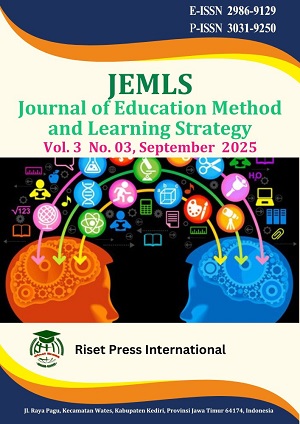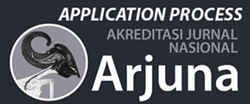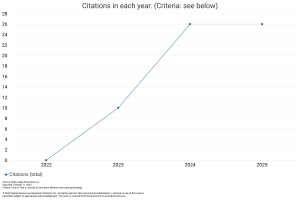MeTayutay: An E-Learning Instructional Tool on Figures of Speech in Selected Short Stories by Genoveva Edroza-Matute
DOI:
https://doi.org/10.59653/jemls.v3i03.1814Keywords:
E-learning, website, learning, learning material, figures of speechAbstract
This study evaluates the effectiveness of MeTayutay, an e-learning tool designed to teach figures of speech and examines the figures of speech found in selected works of Genoveva Edroza-Matute as supplementary learning material. It is grounded in the TPACK Framework (Mishra & Koehler), Connectivism Learning Theory (Siemens & Downes), Formalist Theory, and Reader’s Response Theory. Analysis identified metaphor, paradox, hyperbole, synecdoche, metonymy, simile, rhetorical question, personification, and euphemism in Matute’s works, with metaphor being the most frequently used. These works serve as valuable resources for teaching figurative language. Additionally, MeTayutay proves to be an effective digital instructional tool for improving students’ understanding of figures of speech, reinforcing their learning through interactive and supplementary content.
Downloads
References
Alhawiti, M. M., & Abdelhamid, Y. (2017). A Personalized e-Learning Framework. Journal of Education and E-Learning Research, 4(1). https://doi.org/10.20448/journal.509.2017.41.15.21
Al-Khawaldeh, N., Jaradat, A., Al-momani, H., & BaniKhair, B. (2016). Figurative idiomatic language: Strategies and difficulties of understanding English idioms. https://www.researchgate.net/publication/306961158_Figurative_Idiomatic_Language-Strategies_and_Difficulties_of_Understanding_English_Idioms
Alorro, J. (2024). Onlayn vs. Tradisyonal na Pagtataya sa Filipino ng mga Piling Mag-aaral sa Filipino: Tungo sa Mabisang Pagtatasa at Propesyonal na Pag-unlad. https://jelamagste.org/journalofed/index.php/jela/article/view/18
Angel, D. (2019). Kakayahan sa Pagsusuri ng Tula. https://www.ajhssr.com/wp-content/uploads/2019/09/V939181187.pdf
Astuti, L., et al,. (2020). The Development of Web-Based Learning using Interactive Media for Science Learning on Levers in Human Body Topic. https://files.eric.ed.gov/fulltext/EJ1251661.pdf
Bacuso, A., et a. (2024). Smart Class: Estratehiya sa Pagtuturo ng Filipino sa Grade 3. https://journals.indexcopernicus.com/api/file/viewByFileId/2119019
Bigirwa, J. P., Ndawula, S., & Naluwemba, E. F. (2020). E-learning adoption: Does the instructional design model matter? An explanatory sequential study on midwifery schools in Uganda. E-Learning and Digital Media, 17(6). https://doi.org/10.1177/2042753020946286
Debattista, M. (2018). A comprehensive rubric for instructional design in e-learning. International Journal of Information and Learning Technology, 35(2). https://doi.org/10.1108/IJILT-09-2017-0092
Farhan, W., Razmak, J., Demers, S., & Laflamme, S. (2019). E-learning systems versus instructional communication tools: Developing and testing a new e-learning user interface from the perspectives of teachers and students. Technology in Society, 59. https://doi.org/10.1016/j.techsoc.2019.101192
Ghai, A., & Tandon, U. (2023). Integrating gamification and instructional design to enhance usability of online learning. Education and Information Technologies, 28(2). https://doi.org/10.1007/s10639-022-11202-5
Gustiani, R. (2019). RESEARCH AND DEVELOPMENT (R&D) METHOD AS A MODEL DESIGN IN EDUCATIONAL RESEARCH AND ITS ALTERNATIVES. https://www.researchgate.net/publication/365669215_RESEARCH_AND-DEVELOPMENT_RD_METHOD_AS_A_MODEL_DESIGN_IN_EDUCATIONAL_RESEARCH_AND_ITS_ALTERNATIVES
Javaid, M. A., Schellekens, H., Cryan, J. F., & Toulouse, A. (2021). eNEUROANAT-CF: a Conceptual Instructional Design Framework for Neuroanatomy e-Learning Tools. Medical Science Educator, 31(2). https://doi.org/10.1007/s40670-020-01149-y
Juancho, C. (2021). Makabagong Pamamaraan sa Pagtuturo ng Asignaturang Filipino: Pagtataya sa Teknolohikal, Pedagohikal at Kaalamang Pangnilalaman. Asia Pacific Journal of Management and Sustainable Development, 9(1), 1–11. https://www.researchgate.net/publication/369181627_Makabagong_Pamamaraan-sa_Pagtuturo_ng_Asignaturang_Filipino_Pagtataya_sa_Teknolohikal_Pedagohikal_at_Kaalamang_Pangnilalaman
Karthik, B. S. S., Chandrasekhar, B. B., David, R., & Kranthi Kumar, A. (2019). Identification of instructional design strategies for an effective E-learning experience. Qualitative Report, 24(7). https://doi.org/10.46743/2160-3715/2019.3870
Kaur, M. (2013). Blended Learning - Its Challenges and Future. Procedia - Social and Behavioral Sciences, 93. https://doi.org/10.1016/j.sbspro.2013.09.248
Lockwood, J. (2023). Technology in Education: Promoting Student Engagement. https://career.uconn.edu/blog/2023/12/14/technology-in-education-promoting-student-engagement
Mentari, L. R. (2022). An Analysis of Figurative Language in Short Story “The Happy Prince” by Oscar Wilde. https://ejournal.unib.ac.id/espindonesia/article/download/26092/11747.
Mohammed, T. A. S., Saidi, M., Nyingone Assam, B., & Eldokali, E. M. (2021). Towards a Blended Programme for Arabic and Other Less Commonly Taught Languages (LCTLs) in the South African Higher Education Context. Education Research International, 2021. https://doi.org/10.1155/2021/1455705
Mondragon, S. M. M. et al,. (2023). EFFECTIVENESS OF SUPPLEMENTARY LEARNING MATERIALS UTILIZING DIGITAL PLAY-BASED LEARNING PACKAGE. https://oapub.org/edu/index.php/ejes/article/download/4858/7493
Pacific Policy Research Center. (2010). 21st Century Skills for Students and Teachers. https://www.researchgate.net/profile/Stephen-Poon-5/post/I-need-to-create-a-test-to-measure-the-development-of-creative-thinking-skills-in-the-pre-calculus-courseany-one-can-help-me/attachment/59d64df479197b80779a7633/AS%3A490497891409925%401493955218785/download/21st-Century+Skills+for+Students+and+Teachers+.pdf
Sabirova, E., et al,. (2018). Features and Advantages of Using Websites in Teaching Mathematics (Interactive Educational Platform UCHI.ru). https://www.ejmste.com/download/features-and-advantages-of-using-websites-in-teaching-mathematics-interactive-educational-platform-7661.pdf
Sun, P. C., & Cheng, H. K. (2007). The design of instructional multimedia in e-Learning: A Media Richness Theory-based approach. Computers and Education, 49(3). https://doi.org/10.1016/j.compedu.2005.11.016
Downloads
Published
How to Cite
Issue
Section
License
Copyright (c) 2025 Clarence Angelo J. Amarillento, France Elaen M. Lanuza, Ian Jay C. Sunio

This work is licensed under a Creative Commons Attribution-ShareAlike 4.0 International License.
Authors who publish with this journal agree to the following terms:
- Authors retain copyright and grant the journal right of first publication with the work simultaneously licensed under a Creative Commons Attribution-ShareAlike that allows others to share the work with an acknowledgement of the work's authorship and initial publication in this journal.
- Authors are able to enter into separate, additional contractual arrangements for the non-exclusive distribution of the journal's published version of the work (e.g., post it to an institutional repository or publish it in a book), with an acknowledgement of its initial publication in this journal.
- Authors are permitted and encouraged to post their work online (e.g., in institutional repositories or on their website) prior to and during the submission process, as it can lead to productive exchanges, as well as earlier and greater citation of published work (See The Effect of Open Access).
























